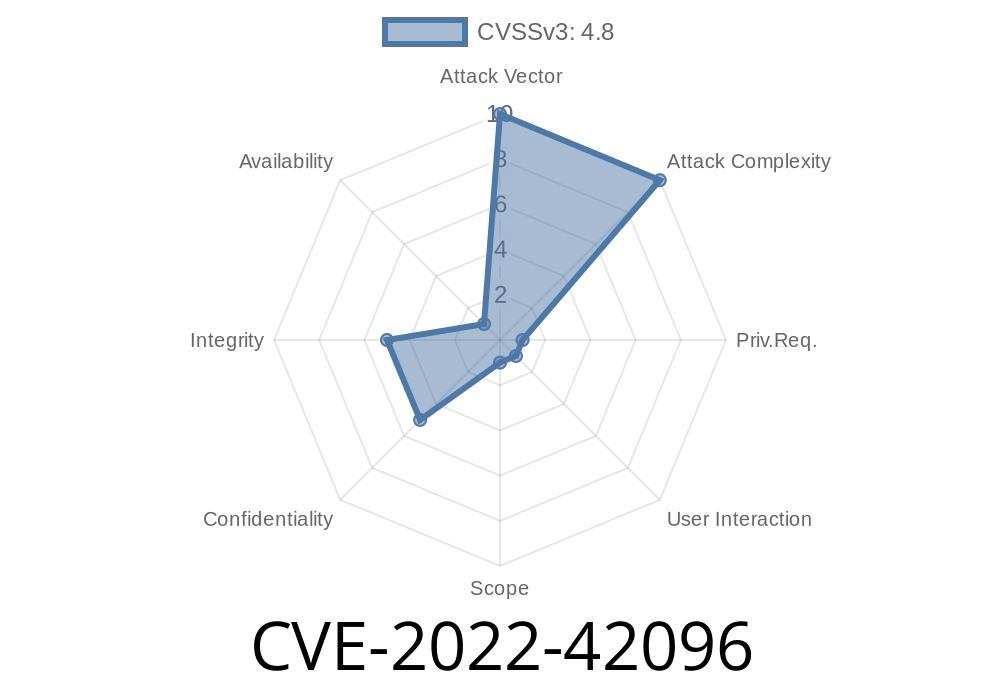In this detailed post, we will discuss CVE-2022-42096, a security vulnerability identified in Backdrop CMS, an open-source content management system (CMS). We will break down the vulnerability into its core components, analyze the potential implications of this issue, provide code snippets and original references, and finally, explore possible ways to prevent or mitigate the exploit.
CVE-2022-42096 Description and Exploit Details
CVE-2022-42096 refers to a stored cross-site scripting (XSS) vulnerability that affects Backdrop CMS version 1.23.. Unlike typical XSS attacks, stored XSS threats involve injecting malicious scripts into vulnerable web applications, where the code is permanently stored and executed whenever a user interacts with the compromised content. In this case, the vulnerability allows an attacker to insert malicious scripts via Post content, potentially causing severe harm to the targeted website, its users, and their data.
The Backdrop CMS issue and vulnerability details can be found in the following links
- Backdrop CMS official website: https://backdropcms.org/
- CVE Details: https://cve.mitre.org/cgi-bin/cvename.cgi?name=CVE-2022-42096
Code Snippet
The following code snippet demonstrates a simple example of a malicious script that an attacker could potentially use to exploit this vulnerability:
<post-content>
<h1>Some Title</h1>
<p>Some content with an <img src="x" onerror="alert('XSS')"> image.</p>
</post-content>
In this example, an attacker embeds an "img" element inside the post content. While the "src" attribute appears to contain an invalid URL, the real purpose of the line is to trigger the "onerror" attribute that follows. Once executed, the "onerror" attribute creates an alert displaying "XSS" to the user. While this particular example is rather harmless, an attacker could potentially exploit the vulnerability by replacing the "alert" call with more harmful scripts capable of stealing user data or taking over user accounts.
Potential Implications
If left unpatched, the stored XSS vulnerability associated with CVE-2022-42096 grants attackers a wide range of exploitative options, including but not limited to:
Mitigation and Prevention
To protect your instance of Backdrop CMS from becoming exploited via CVE-2022-42096, follow these recommendations:
1. Update to the latest version of Backdrop CMS: Updating your CMS to the most recent available version (v1.24. or later) will ensure that you benefit from security patches and fixes implemented by the developers.
2. Validate and sanitize user input: Properly validating and sanitizing user-submitted content can greatly reduce the likelihood of XSS attacks succeeding. Allow only limited and essential HTML tags, and restrict or escape potentially dangerous JavaScript events and attributes.
3. Implement Content Security Policy (CSP): A Content Security Policy can help prevent the execution of malicious scripts by explicitly specifying which sources of content are allowed to be loaded and executed by the web application.
4. Educate users about security risks: Train your users about the potential dangers associated with XSS attacks and inform them not to click on suspicious links or submit sensitive information on unfamiliar sites.
Conclusion
In summary, CVE-2022-42096 is a stored XSS vulnerability in Backdrop CMS version 1.23. that can have potentially severe ramifications if left unpatched. By updating your CMS to the latest version, validating and sanitizing input along with implementing a Content Security Policy, and educating your users, you can mitigate the risks associated with this vulnerability and protect your website's users and data.
Timeline
Published on: 11/21/2022 21:15:00 UTC
Last modified on: 11/23/2022 15:01:00 UTC
